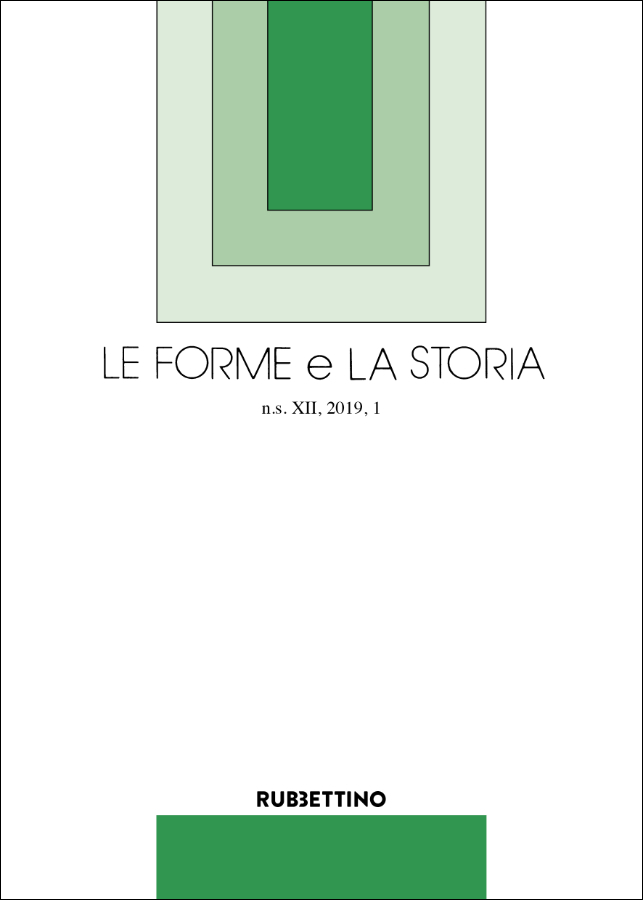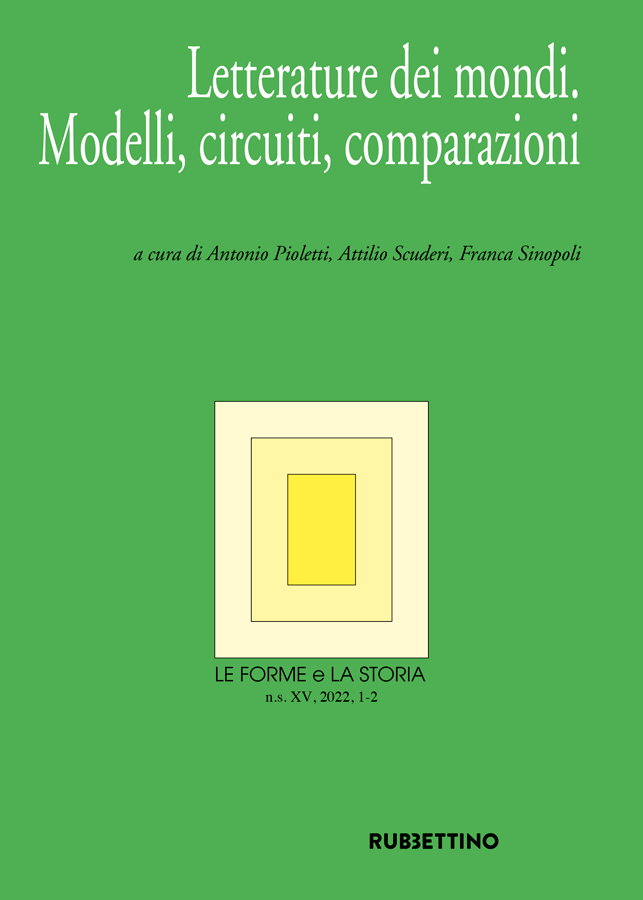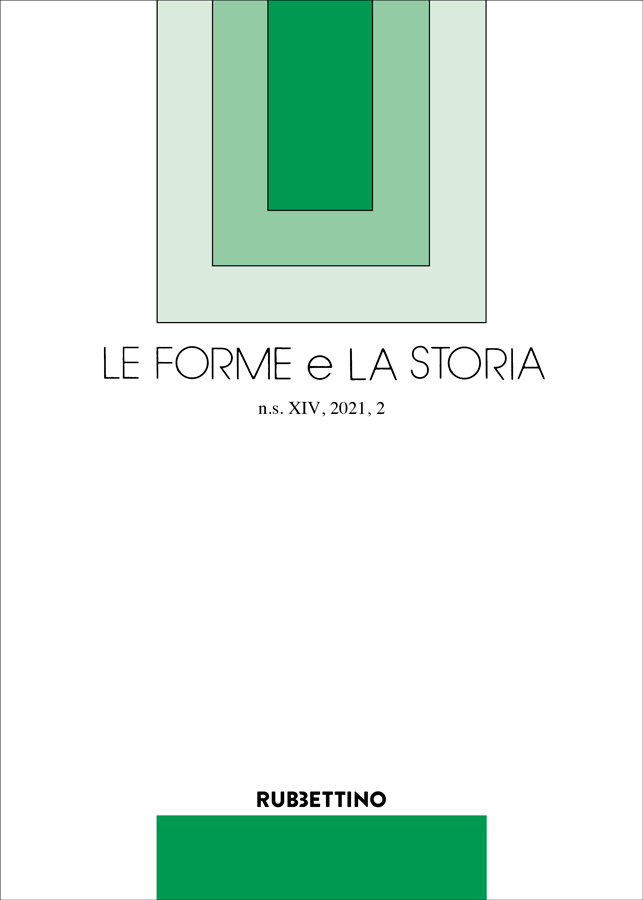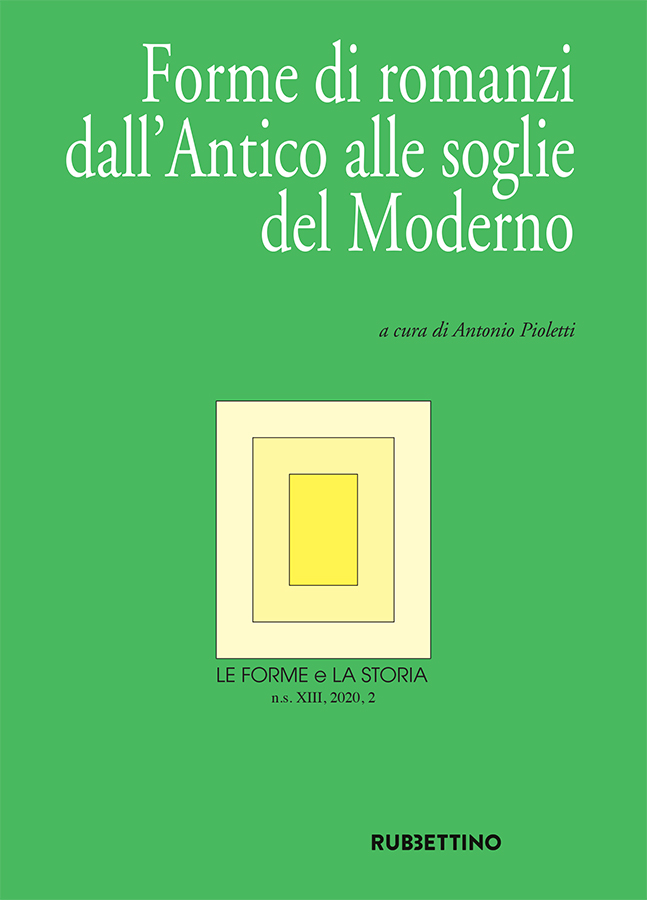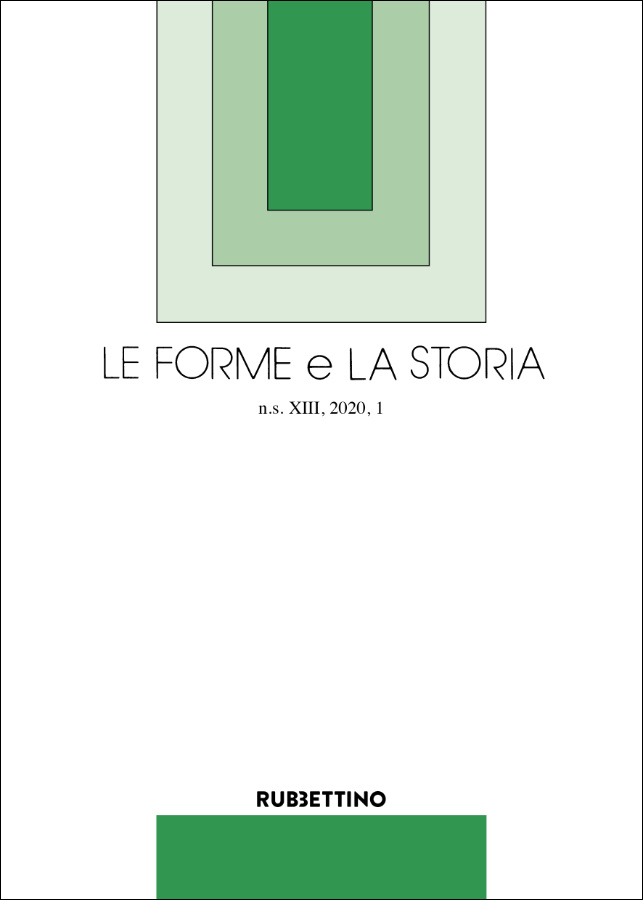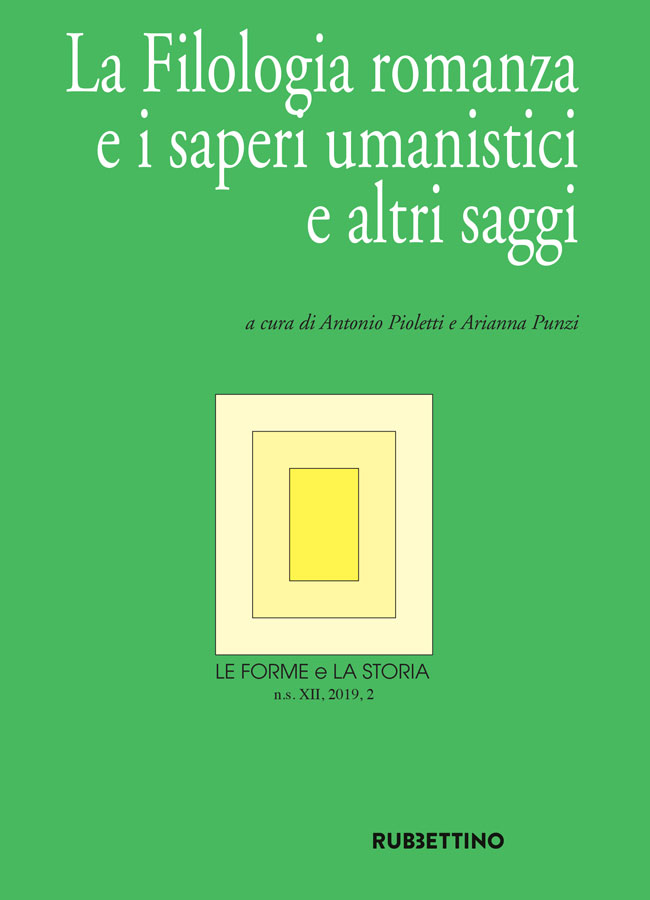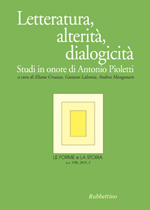Le forme e la storia ns XII, 2019, 1
Cartaceo
€14,25 €15,00
Laura Bottini
Il Kitāb Anbāʾ nujabāʾ al-abnāʾ di Ibn Z. afar al-S. iqillī
The Kitāb Anbāʾ nujabāʾ al-abnāʾ (Reports on Sons of Noble Breed) written by Ibn Z. afar al-S. iqillī, the
Laura Bottini
Il Kitāb Anbāʾ nujabāʾ al-abnāʾ di Ibn Z. afar al-S. iqillī
The Kitāb Anbāʾ nujabāʾ al-abnāʾ (Reports on Sons of Noble Breed) written by Ibn Z. afar al-S. iqillī, the Sicilian (died between 1170 and 1172), collects the biographies of illustrious men, recounting their youth in detail through many and precious anecdotes. My analysis of this text, a work that up until now has been investigated very little, seeks to identify the organizational model of the material, its aims with regard to the historical-political context of the time, as well as highlighting differences and peculiarities in comparison with the same typology of texts produced in Sicily and in other geographical areas of the Muslim world in the Medieval era.
Nicolò Mineo
Purgatorio XXVIII: l’«eterno femminino» o il materno o il simbolismo escatologico? Matelda
The final of the chant XXXIII of Purgatory, to the last action of Matelda, indicates that the woman is characterized in the function of renewing the ability to understand. The rivers Eunois not only renews the memory of good deeds, but restores cognitive ability, abolishes the darkening of the mind. Matelda is used to make this return as its otherworldly function, but not necessarily as a fixed and constant role.
Mario Pagano
Una ricetta inedita in volgare siciliano contro il gelso del ms. Venezia, Bibl. Naz. Marciana, It. Cl. III, 27 (5008)
A late fifteenth-century recipe for the treatment of the so-called gelso, a fleshy growth similar in shape to mulberry that seldom affects horses, is published here for the first time. This text, edited in view of the next periodical update of the Corpus ARTESIA (Archivio Testuale del Siciliano Antico), the documentary base of the online Vocabolario del Siciliano Medievale (VSM), contains the earliest occurrence of the noun carnazza.
Sebastiano Italia
Foscolo e i prodromi del dantismo moderno. Un sondaggio preliminare
Ugo Foscolo inaugurates modern Dantean criticism offering a directed and involved interpretation, aiming at removing the “tales” and the errors accumulated over centuries of exegesis, as well as emphasizing the pedagogical function, illuminated by the dream of a “new Italy” and a “new Church”. Foscolo’s call to the study of the Commedia stands out in the midst of the constructive consideration of its cultural references, but also in the idea of the prophetic nature of the Commedia and Dante’s firm conviction of its divine investiture. Furthermore, the lesson learned from Vico allowed Foscolo to list Dante among the poets-theologians who simul fingunt creduntque. Out of this the conviction that Dante had truly believed in his own prophetic investiture is consolidated, Dante was legitimated in taking well determined positions with regard to both doctrine and in politics.
Donatella Siviero
Ideas de Leopoldo Alas ‘Clarín’ sobre la traducción literaria: el caso de la Eneida de Luis Herrera y Robles (1898)
This paper presents an analysis of the comments on literary translation present in Leopoldo Alas ‘Clarín’’s critical works. Clarín is one of the few intellectuals of his day to discuss problems concerning translation with a competence that was unusual for the late nineteenth century, a time when translation studies were yet to be developed. His observations concerned such questions as faithfulness to the original, the distance and the difference between creation and translation, the translator’s qualities and skills. Using as its starting point Clarín’s review of Luis Herrera y Robles’s translation of the Aeneid, the paper will discuss in particular the author’s view of translations of the classics.
Miryam Grasso
Il mare. Itinerari tra le carte di un racconto di Pavese
In the first part of this contribution we propose a genetic analysis of the writing process of the short story Il mare, published by Cesare Pavese in 1942, both in the form given to the complete manuscript and in the copious, fragmentary preparatory material. As far as interventions on variants are concerned, we identified two trends: the author frequently hesitated on two ore more lessons and in the end he returned on the solution he rejected at the beginning; he often swinged between contraries too. Furthermore, several interventions aim to portray the sea not as a real and tangible element, but as an undefined elsewhere towards which the main characters stretch out, without reaching it. In the second part we focus on many points of contact between this short story and La luna i falò, of which Il mare can be considered one of the most significant avantexts. We can trace many analogies among characters, elements of landscape and some episodes of the novel.
Carmelo Tramontana
Città di carta. Sondaggi sulla persistenza dell’archetipo di Babele nell’immaginario urbano
The archetypical image of the biblical tower of Babel lies under many literary representations of urban life throughout centuries. From Dostoevskij to Paul Auster, from Don DeLillo to Roberto Saviano, urban structures have not only been backgrounds but main characters of tales and novels. The Tower of Babel represents the dream of humanity living together in harmony and communion. However, Babel might imply a dangerous risk: the utopian project of a self-sufficient humanity perhaps freed from god’s will. This babelic function can be seen in some works (Dostoevskij, Auster, Will Eisner and Saviano) which will be debated here.
Raffaele Zago
Complexity in film dialogue La costruzione dell’Altro nelle serie televisive
The purpose of this paper is to highlight the complexity of cinematic discourse and, more specifically, of English film dialogue. Two types of complexity will be detected and examined. In the first place, relying on findings obtained through Biber’s multi-dimensional approach, film dialogue will be discussed as an elaborate network of co-occurring linguistic features. Then, it will be described as a register constantly oscillating between two exigencies, namely that of simulating spontaneous conversation and that of narrating. The latter issue will be explored using utterance launchers as an example.
Mariavita Cambria
‘Going into a nosedive’. Re-languaging the other via the Speech Act theory in Black Mirror
The British TV Series Black Mirror offers a sharp social critique realised through several narrative strategies in which language and communicative events play a crucial role. It revolves around the evolution of a pervasive technology in the framework of the digitalization of relationships, investigating the ties between humans and technology, the latter of which often threatens to progress so quickly that our ethical frameworks do not have the chance to catch up. This paper aims at investigatin how spoken discourse and specifically speech acts, are represented in Nosedive, one of the most discussed episodes of the TV Series by consideration of Austin’s (1962) locution, illocution and perlocution acts.
Valeria Monello
Sarah and Tammy: ‘Butch and Femme’ in Transparent
Transparent is an award-winning American television series created by Jill Soloway that debuted in 2014. Although the main plot revolves around the unexpected coming out of Mort, the father of the Pfefferman family, as transgender, all the characters’ lives can be analysed in terms of gender representation issues and for challenging and re-negotiating normative gender identities. Drawing from Multimodal Critical Discourse Analysis tools and telecinematic discourse contributions, the paper wishes to investigate the linguistic and cultural construction of Sarah and Tammy, two characters in the TV series, as a ‘Butch and Femme’ couple, and whether such representation refers to stereotypes and schemata in order to establish a connection with the audience, the so-called ‘overhearers’ (Culpeper 2001).
Ilaria Moschini
May the Fan Be with You! Languaging Identities and Representation between “Pan-fanaticism” and “Aug-melted” Reality
«Expanded transmediality» (Stein and Busse 2012) is a bi-directional process where top-down media franchises exploit bottom-up participation, while grassroots involvement progressively influences the creation of television texts. In such a context, that could be defined as «pan-fanaticism» (Moschini 2015), the sphere of values belonging to fan communities has become pervasive since, not only these groups interact with TV series’ creators, but also many screenwriters and directors tend to define themselves «fans» of the stories they wish to tell. Through the critical multimodal discourse analysis (van Leeuwen 2014) of a selected corpus of examples, the paper aims at investigating the linguistic and semiotic realization of transmedial «pan-fanaticism»: it is a kind of representation that sets the stage for the emergence of an “aug-melted reality”, that is the mediated discursive space where global flows of «fantasyscapes» (Napier 2007) and reality converge and where collective and individual identities are negotiated in transcultural, transnational and transmedial «imagined communities » (Anderson 2006 [1983]).
Maria Rizzarelli
Cloning Self. Roles and Identities in Orphan Black
The aim of this paper is to bring into focus the interconnections betweenperformance and identity dynamics in the construction of Orphan Black’s female characters. The Canadian sci-fi tv series was broadcast on Space in Canada and on BBC America from 2013 and is currently a NETFLIX distribution. Its main character, Sarah Manning, steals the identity of another woman – who looks like her double – after witnessing her suicide. Her saga, which spans 5 seasons, is set off by the discovery that she is one of many clones, and by her desire to unmask – together with her “sisters” she meets during her investigation – those responsible for the experiment and its criminal aims. The dystopian landscape which is the background to the sci-fi narration appears susceptible to a reading based on the correlation – identified by Mitchell in Cloning Terror. The War of Images, 9/11 to the present – between terrorism, clonation and war of images. Yet, it is Tatiana Maslany’s identity-focused performance which can be the source of a critique and a deconstruction of this product (the actress received wide acclaim and awards for her extraordinary interpretation of Orphan Black’s different clone characters). To construct the various subjectivities, she duplicates and reinvents her own image, thus rewriting the paradigm of sisterhood within a post-human scenario.
